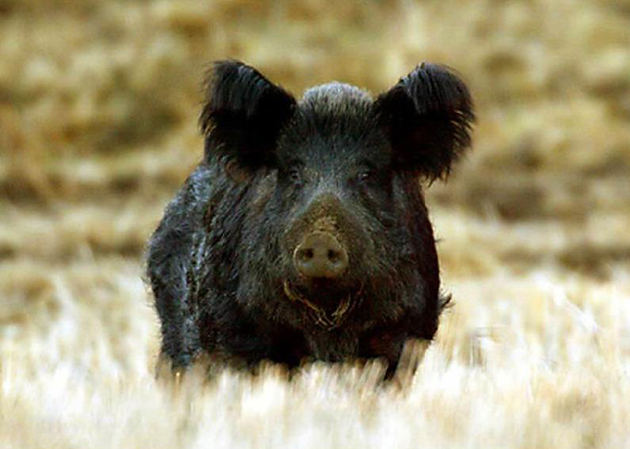The smallest party but for two women,
we thirteen pigs boarded in Cuba.
Six hundred men, their horses and war dogs
disembarked with us in La Florida—
and who then had the best of it?
We chosen ones, los preciosos
guarded from thieves in camp and out.
But the soldiers, how poorly they foraged!
Where had they lost the animal ways?
Eat and breed: we followed orders, too.
Some of us went wild, some cast their lot
with the locals. Some went in trade
to the tribes for lies, ever more lies: sí, sí,
a city of gold lay just one more day
through the endless festín of undergrowth.
Of the months spent slipping and slopping
over water even pigs wouldn’t drink,
while Spain had shrunk to a chestnut and fallen from reach—
of mad Colón who brought us to a new world—
why remark? We were the butcher De Soto’s now.
Hacking and slashing, clanking and rusting,
the humans stooped to conquer the overgrowth.
Why the carnage, village after village?
Why did El Comandante not find a place
to lie down in the heat and digest the morning
to make room for whatever hunted later?
Why did he not sacrifice himself like his god
and do what religion does: kill not with the sword
but from within? The white man’s ills
with lacy Latin names—how many swine carry!
The natives had only to eat of pork to perish.
And where did the first two-legged Spaniard fall
to our four-legged level, then fail to rise?
Where did a white man burn black with fever?
North their verminous rags straggled
toward the day we outnumbered them.
Was El Gobernador the god he claimed to be?
One day even he crumpled and died.
Gladly would I have eaten his corpse,
yet under cover of night, in the heart
of the last river he would cross, it sank.
He left just half his men, not an ounce of gold—
and seven hundred pigs awaiting orders.
To the survivors, we were auctioned,
for promissory notes not worth sniffing.
Later, much later, when French fought their way
to that great river’s swollen mouth,
they would find only what we laid waste.
And tracked through the delta, the future
trampling the past: the spoor of Sus scrofa,
familiar from Old World forest, hoof prints
claiming the New World for the feral hog.
In the dank dawns of that choked Eden,
when the carcass of a river otter ripens
and not a single vulture rises yet on high,
I am large, I contain multitudes.
Debora Greger’s most recent book is By Herself.


























